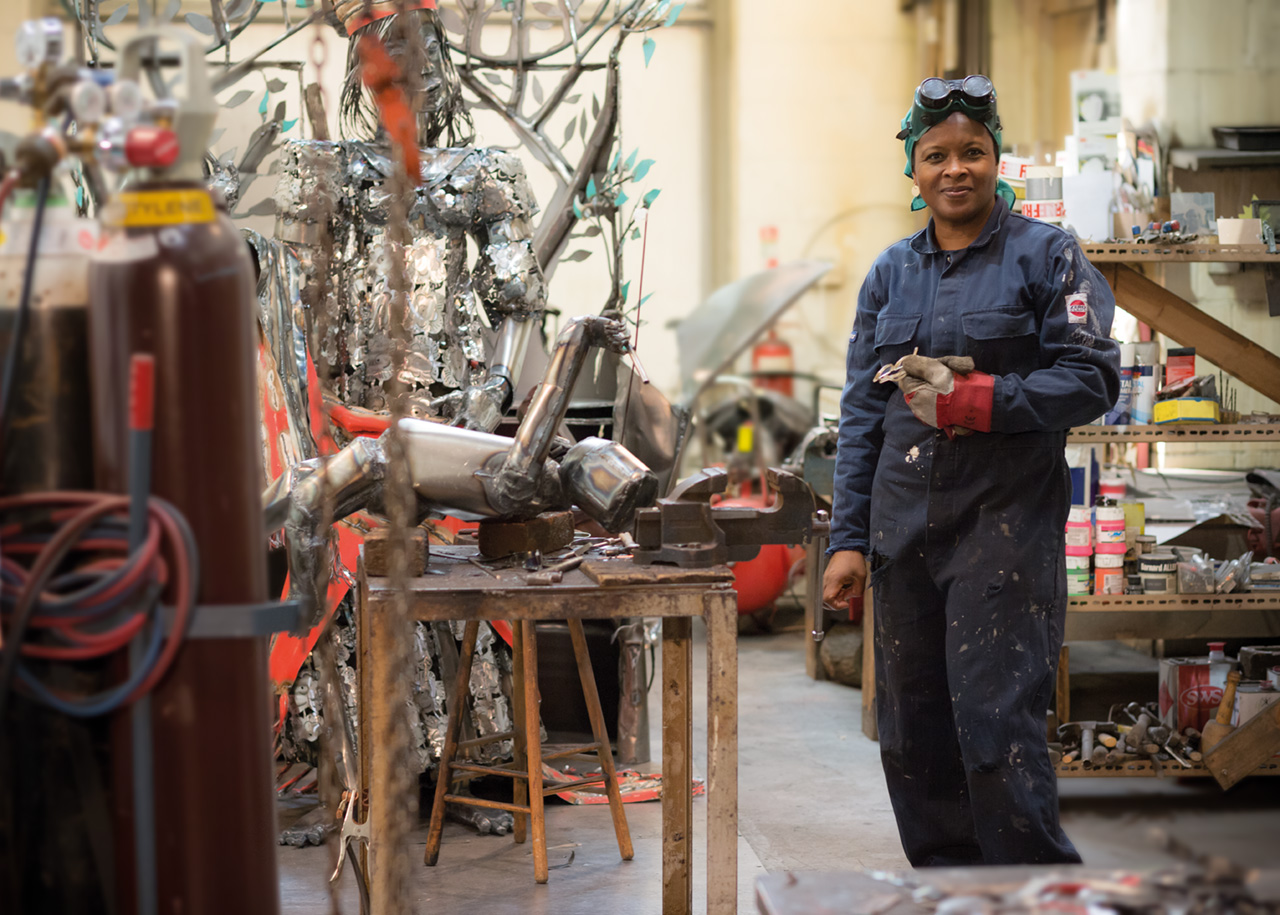Chipping away
A touring sculpture exhibition is recasting traditional ideas about the artform as a male arena
Picture a sculptor at work and, whatever your gender, it will likely be an image of a man chipping away at stone or welding metal. It’s hardly surprising – sculpture was a man’s domain until well into the 20th century, and even when sculptors like Barbara Hepworth and Elisabeth Frink became successful in the 1950s and 1960s, attitudes towards them were often sexist and belittling.
In art school and subsequent careers, women were guided into “softer” areas like textiles and stitchery, marginalised from the history of art.
The exhibition Breaking the Mould: British Sculpture by Women since 1945, at Yorkshire Sculpture Park and then touring, including the Ferens Gallery in Hull, sets out to redress this bias. The exhibition presents the incredibly diverse output of 50 post-war sculptors. The works are selected from the more than 1,000 works of sculpture in the Arts Council Collection. As if to drive home the point, only about a quarter of the works in its collection are by women, and most of these have been collected in the past couple of decades.
“It’s a gradual process but the picture is changing,” says Natalie Rudd, curator at Yorkshire Sculpture Park. “A whole generation has paved the way and the landscape is more positive now, with big solo exhibitions by women, which wasn’t always the case.”
Many women artists became pioneers of “soft” sculpture, embracing soft materials and textiles, sometimes consciously as a political tool. One example in the exhibition is the American artist Jann Haworth who came to prominence in the 1960s. “She uses cloth, latex and sequins, to carve out a territory that men wouldn’t encroach on,” says Rudd.
“Other women have used the macho-aesthetic as a strategy. Rachel Whiteread works on a monumental scale but traces the history of domestic space. Cornelia Parker sees her work as spanning the gender spectrum, where – to paraphrase her own words – you can shout and you can whisper.”
Embracing rather than fearing domesticity and the “pram in the hall”, women artists can now mine the creative potential of, for example, motherhood, in ways their mothers and grandmothers could not. Pioneering works include Mary Kelly’s six-part installation Post-Partum Document (1973-1979).
“The exhibition is making a strong and positive statement about their subjects and experiences,” says Rudd. “They are simple, accessible ideas that can be explored across generations.”
Women use their lives, their bodies and their direct experiences, arguably exploring more private and painful themes than men do, and so push more boundaries. They use everyday objects and materials to express themselves because traditionally it’s what was available to them. Stuffed tights and rotting flowers are both implicit and explicit echoes of constrained lives, domesticity recast in playful, knowing, sardonic and powerful ways.
The exhibition is more than a chance to see the works, it’s an exploration of how women artists over the post-war decades have found (and filled) the literal spaces to make and show their work. The exhibition also acts as a research project. “As well as presenting the works, we collected interviews and statements from 30 women artists through our research network,” says Rudd
Only a handful of the 50 may be household names but that reflects the sexism of the art world, with which the media has colluded. Because women’s art generally has less monetary value, it is less collected and therefore less visible in galleries – and vice versa.
“We still have to be cautious, because disparities remain in the way works enter collections,” says Rudd. “The ‘little woman’ attitude is still not far from the surface.”
This exhibition shows that despite – and because of – being pushed into non-traditional forms and materials, women sculptors are now choosing them to create work that is fearless, honest and powerful.
Breaking the Mould: Sculpture by Women since 1945 is on 29 May-5 Sept at the Longside Gallery, Yorkshire Sculpture Park, then touring, including 2 July-2 Oct at the Ferens Art Gallery, Hull

Leave a reply
Your email address will not be published.